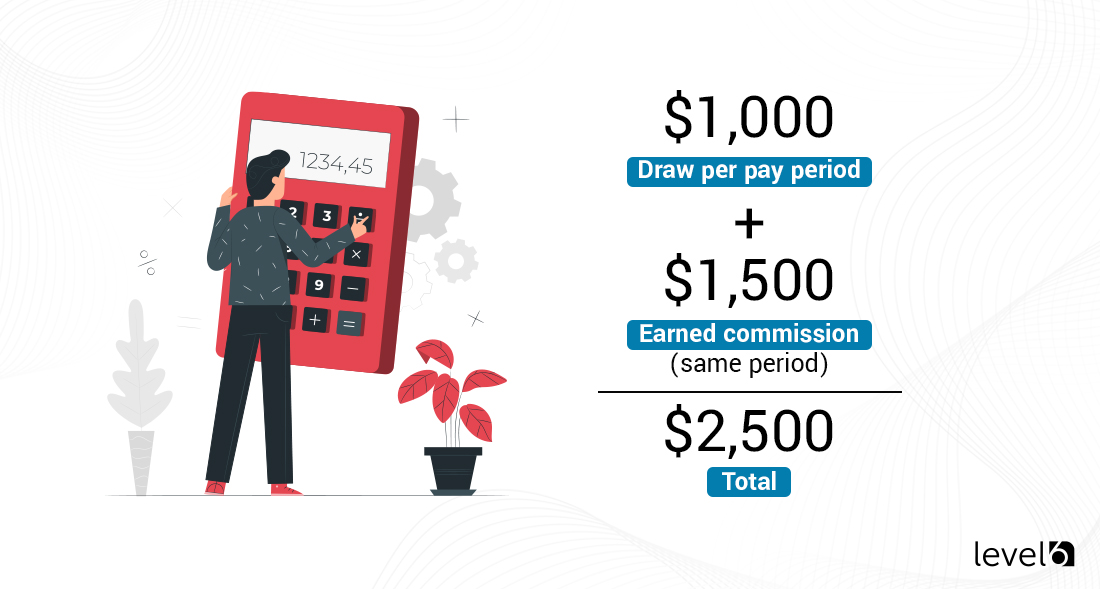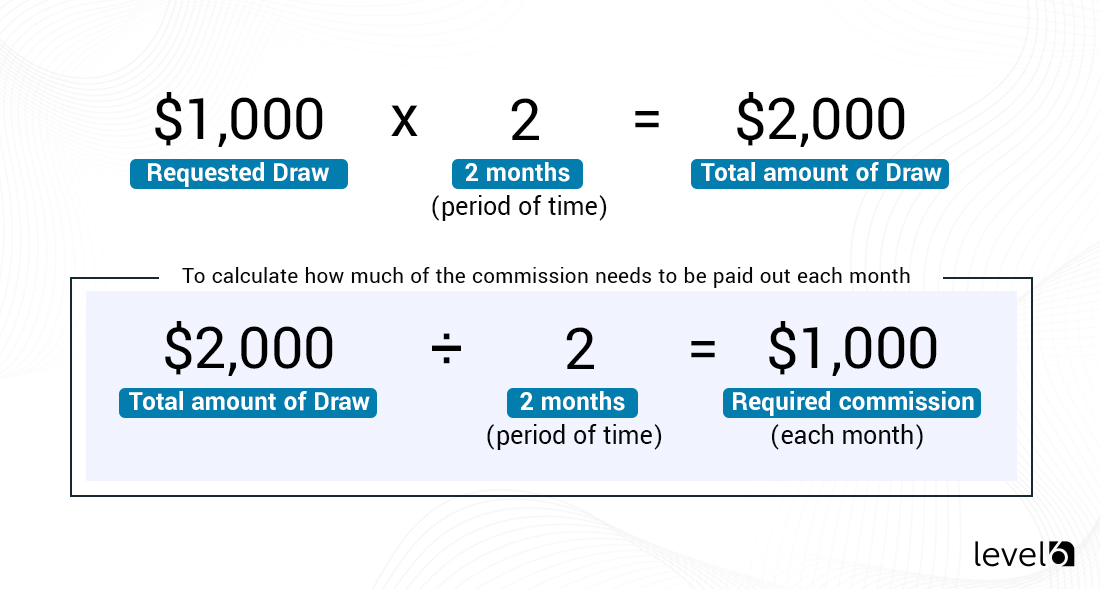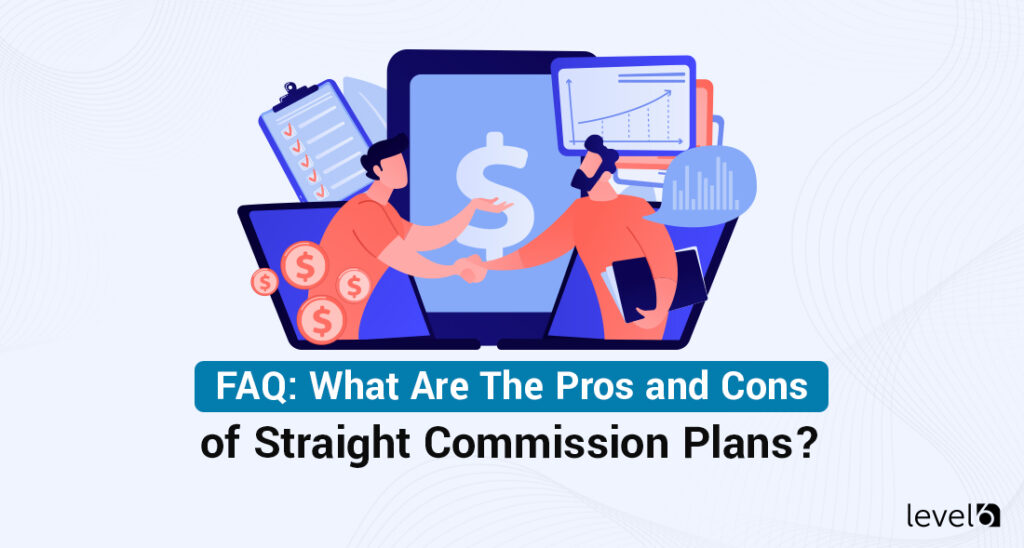The sales industry is filled with terminology and processes that can be difficult to understand, especially for new sales reps. One such term is “draw against commission,” a compensation structure used by many companies to pay their sales reps.
In this blog post, we’ll take a closer look at draw against commissions, how they work, what other names they go by, and provide an example of a draw against commission. We’ll also discuss the pros and cons of using this method of compensation for sales reps.
A draw against commission (or draw) is a sales compensation method that provides a sales representative with an advance payment from the company based on projected sales. This is intended to provide the rep with a steady, predictable income stream and to help motivate them to achieve the agreed-upon goals.
The History of Draws Against Commissions
Draws against commission were introduced in the 1970s as a way to reward top-performing sales reps and incentivize others to reach their goals. This structure of compensation created more flexibility than traditional salary structures and allowed reps to benefit more quickly from their hard work and dedication.
A draw against commission is also referred to by many other names, such as:
- Draw against earnings
- Advance against commissions
- Front-end pay
- Cash advances
- Salary guarantee
- Commission advance
- Guaranteed commission
- Payroll advance
- Loan against commission
- Advance payment
- Advance on commissions
In some cases, draw against commission can also be referred to as ‘advance salary.’ This type of payment structure is often used when a sales rep needs immediate funds for their expenses or any other purpose.
It’s also sometimes called ‘advance draw,’ which means that the company will pay the sales rep an advance on future commissions. This is especially beneficial for sales reps who are expecting higher future earnings but may need money now.
Companies That Use Draws Against Commissions for Sales Rep Teams
Draws against commissions are used by a wide range of companies across many different industries. This type of compensation plan is especially common in service-oriented businesses such as consultancies, professional services firms, and technology companies.
It is also commonly used by small businesses, startup companies, and larger organizations with multiple sales representatives on staff.
Looking to learn more about an incentive, rebate
or reward program for your business?
Curious about costs?
Try our instant pricing calculator:
Draws against commission have become increasingly popular due to their flexibility and ability to incentivize reps to reach their goals faster. They also provide a steady, reliable income for reps and encourage them to work hard and be successful.
Example of a Draw Against Commission
Draws against commission (sometimes known as a ‘draw-based compensation model’) is a sales compensation system that gives a sales rep a regular, predetermined amount of money during their pay period (e.g., weekly, bi-weekly, etc.) while they are actively working on a commission. This “draw” amount is then offset by any commissions the rep earns in the same pay period.
For example, let’s say that a rep’s draw is $1,000 per pay period. If they earn $1,500 in commissions in that same period, they will receive the full $2,500 ($1,000 + $1,500). However, if they only earn $500 in commissions, then they will only receive $1,500 ($1,000 + $500).
Types of Draw Against Commission
There are basically two types of draws against commission — recoverable and non-recoverable. Both types have pros and cons, so it’s good to understand their differences before choosing one.
Recoverable draws against commission are a type of commission structure that is used to incentivize sales reps in a team-based environment. In this type of draw, the employer provides an advance payment to the sales rep, which is then paid back from any commissions earned by the sales rep.
This advance payment, or “draw,” acts as an incentive for the sales rep to perform well, as it provides them with a larger paycheck even if they don’t make any sales in a given pay period.
Recoverable draws against commission are different from non-recoverable draws, as the employer retains the right to reclaim any advances made if the sales rep fails to generate enough commissions to cover the draw amount. This allows employers to ensure that their investments in paying their sales reps will not be completely lost if their reps underperform.
Furthermore, recoverable draws against commission provide employers with more flexibility and control over how their team is compensated. It is important to note that in order to use a recoverable draw against commission system, employers must provide clear terms and conditions for how the draw will be handled.
This includes outlining how much of an advance can be provided when it must be repaid and what penalties may be incurred if it is not repaid within the given timeframe. Additionally, employers must also make sure to document all draws and advances so that they can track and audit their performance.
A non-recoverable draw against commission is a type of sales compensation plan in which a sales rep is given an advance against their expected commissions and is not required to pay back the advance if their commission targets are not met. This type of plan is beneficial for businesses that want to attract and retain sales reps without needing to offer high base salaries. It also allows sales reps to plan for their future earnings.
Under this type of plan, the business agrees to make an advance payment to the sales rep in exchange for the rep’s agreement to attempt to meet specific sales objectives. If these objectives are met, the sales rep will then receive additional commissions on top of their advance.
However, if the objectives are not met, the sales rep will keep the advance and will not be required to repay the amount. This type of draw against commission is beneficial to businesses that need to quickly hire and retain sales reps but do not have the resources to offer high salaries.
It also provides more financial security and stability for sales reps because they know that they will still receive an advance regardless of the results of their sales efforts. This can be especially helpful for newer or less experienced sales reps who may need more time to develop their skills.
Benefits of Using a Draw Against Commission
Draws against commission can be a great way to help sales reps stay motivated and make sure they are making enough money. By providing a base salary, companies can ensure that their sales reps are getting paid regardless of their sales performance.
In addition, this system can be used to incentivize better performance by offering larger commission percentages if the reps hit certain sales goals. With a draw against commission, the company can offer a higher base salary as well as an increased commission rate as sales performance increases.
Draws against commission also provide peace of mind for sales reps. Since they know that they will have a base salary regardless of their performance, they can focus on hitting their targets without worrying about whether they will make enough money to pay their bills each month. This security can be very important for sales reps, especially those just starting out or working in a commission-based role for the first time.
Finally, draws against commissions can be used as a recruiting tool. By offering a higher base salary with the potential for increased earnings depending on performance, companies can attract more talented sales reps and retain them longer. This helps create a strong sales team and can have a significant impact on the bottom line.
Drawbacks of Using a Draw Against Commission
Draws against commissions can be beneficial for a sales rep team, but there are some drawbacks to consider. The most obvious drawback is that there is always the possibility that a draw against commission can leave a rep short of their full commission amount.
This is especially true with non-recoverable draws, as they must be paid back regardless of performance. This can lead to reps feeling frustrated and unmotivated if they don’t reach their sales goals.
Another potential issue is that draws against commissions can potentially create tension within a team if one person feels like they’re receiving an unfair amount or not enough. This could lead to team members feeling undervalued or mistreated, which can negatively impact team dynamics.
Finally, it’s important to note that using draws against commission could potentially affect a company’s cash flow if payments are not received in a timely manner. If draws are not paid back on time, then a company may be left short on cash which could have serious consequences for the business.
Calculating Draws Against Commission
When it comes to calculating draws against commissions, the process is fairly straightforward. To determine the amount of a draw against commission, you’ll need to consider a few factors, such as the length of time for the draw and the number of sales that are expected to be made during that period.
The first step in calculating a draw against commission is to determine how much of the sales rep’s commission will be drawn from. This can be done by calculating the total commission earned from past sales or by creating an estimate of expected commissions for the given period. It is important to note that this amount should be equal to or greater than the amount of the draw against commission that is being requested.
Once you have determined the amount to draw against, you will need to calculate the total amount of draw requested over the given period of time.
For example, if the rep wants a draw of $1,000 and the period of time is two months, then the total amount of the draw would be $2,000 ($1,000 x 2).
To calculate how much of the commission needs to be paid out each month in order to meet the draw amount, simply divide the total amount of draw by the number of months in the period. In this example, $2,000 / 2 = $1,000. This means that $1,000 of commission needs to be paid out each month in order to meet the requested draw amount.
Once the monthly commission payout has been determined, you will need to make sure that the total commissions earned by the rep meet or exceed this amount over the course of the period. If the reps do not meet this target, then they will not be able to receive their full draw amount.
Overall, calculating a draw against commission is not difficult, but it does require some planning and forethought. It is important to ensure that you are accurately calculating the total amount to draw and that the rep will be able to earn enough commission to meet their requested draw amount.
FAQs on Draws Against Commission
Q: Are draws against commission good for a sales team?
A: Draws against commission can be beneficial for sales reps who need a steady income but need to work on building their client base or gaining more sales experience. The draw provides them with a regular paycheck and encourages them to continue working hard to meet their targets.
Q: Is a draw against commission considered income?
A: Draws against commission are typically considered as regular income; however, this may depend on the specific agreement between you and your employer.
Typically, the draw and commission are taxed together and considered ordinary income. It’s important to properly anticipate the tax bracket you might find yourself in, as the last news you want to get at the end of the year is that your last commission check or bonus bumps you into a higher tax bracket that you’ve not prepared for.
Q: What is a “forgivable draw against commission?”
A: A forgivable draw against commission is a type of draw in which the employee is not required to pay back any amount that was drawn if certain criteria are met.
This type of draw is common in sales roles where employers want to incentivize their employees to meet certain goals or targets. For example, if a sales rep meets their quota by the end of the year, then the amount drawn against commission is forgiven and not required to be paid back.
Q: How long does it take for a new sales rep to hit quota regularly?
A: It can take two to three years for a new sales rep to hit quota regularly. It takes time to learn the ropes and build up a client list. During this time, slow periods can be devastating to a rep’s bank account.
Q: What should a rep do if a big project takes longer than expected to close?
A: If a big project takes longer than expected to close, the rep may need assistance. In such cases, a draw against commission can provide a lifeline. This is a process where a sales rep may receive an advance on their commission before their clients settle their accounts. This can be especially helpful in situations where clients have net 30 terms, meaning they have to wait a few weeks before settling their accounts.
We hope this article helps you understand the ins and outs of a draw commission pay structure and how to make it work best for you.

Claudine is the Chief Relationship Officer at Level 6. She holds a master’s degree in industrial/organizational psychology. Her experience includes working as a certified conflict mediator for the United States Postal Service, a human performance analyst for Accenture, an Academic Dean, and a College Director. She is currently an adjunct Professor of Psychology at Southern New Hampshire University. With over 20 years of experience, she joined Level 6 to guide clients seeking effective ways to change behavior and, ultimately, their bottom line.

 Demo
Demo








